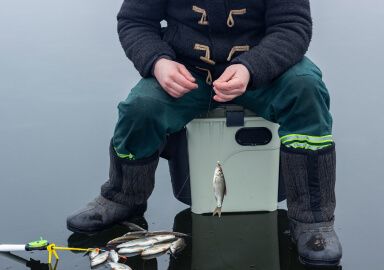Ladyfish
Ladyfish is an inshore species known for its strong, unpredictable fights; inhabiting tropical and subtropical waters, it can be targeted by spinning or fly fishing, offering a catch you won't soon forget.
View 3 listings
3
listings
–
price starting from
1
countries
–
to the nearest trip
Where and When?
Ladyfish are usually found in coastal waters of tropical and subtropical oceans. E. affinis is found in the eastern Pacific Ocean, while E. machnata is encountered around warmer areas of the Indian Ocean - particularly Australia and India. Other species are found along the west African coast and around Hawaii. This species is often migratory, up and down coasts, frequently moving from inshore waters into deeper waters. Ladyfish are rarely closely associated with structure, preferring more open water. This species patrol constantly in search of food and occasionally congregate when prey items are located. In the warmer areas this species can be caught throughout the year, but they usually migrate out of cooler areas in winter. They feed, and thus may be caught, throughout the day and night, but fishing is usually carried out and is easiest, in daylight.
About Ladyfish
“Ladyfish”, also called “tenpounders”, “bananafish” or “skipjacks”, are one of about six species of the genus Elops. The best known are Elops affinis, caught off the south-western USA, and Elops machnata, caught throughout much of the Indian Ocean. All the species are very similar in looks, behaviour and diet. They are known as fusiform, that is, have long, lean, tapering bodies with large mouths and massive eyes. The mouth has no well-formed teeth and the ladyfish effectively “gulps” in its prey. They are slightly laterally compressed with shiny, mostly silver, scales that shed readily.
When small, ladyfish target small invertebrates and fish, but they quickly focus in on fish, with a few squid mixed in, as they grow. Their dorsal area is greenish blending to silver down the sides. The maximum size in the genus is about 118 cm (46 in.) and 10.8 kg. (24 lbs.), but fish of around 50 cm. (20 in.) are more common. There is no obvious sexual dimorphism in ladyfish and spawning is assumed to take place offshore, probably after dark. Juveniles often live in estuaries and adults can, occasionally, be found there too. Ladyfish are generally an inshore species living in the upper layers of water and they are usually solitary or in small groups of similar size.
How to Catch?
As a top fish predator mostly of live prey, the majority of ladyfish are caught by active fishing such as spinning or by fly fishing. This species is usually a fish of estuaries, bays and inshore waters and most ladyfish fishing is carried out from rocky or sandy shores, jetties, piers or from small boats in estuaries. Medium tackle can be used as the species has no significant teeth, is usually hooked in open water and rarely heads for structure or cover when hooked. While some are occasionally caught on dead bait, most targeted ladyfish fishing is carried out by anglers using artificial lures or fly.
Ladyfish seem to move constantly, and so moving up and down a shore or moving a boat around a bay or lagoon is best. Their mouth is very bony and often, when one is hooked, it will jump out of the water and rapidly shake its head to dislodge a hook. In South Africa they are called “springer” as they often “spring” out of the water. Their flesh is bony and reputed to be poor eating quality, but the capture of a large ladyfish is quite an achievement. They fight strongly and wildly and do not give up without trying every trick in the book.




